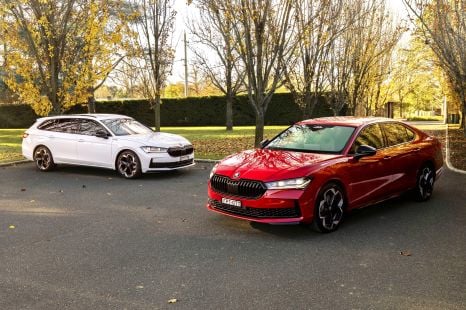

Max Davies
2025 Skoda Superb Sportline review
3 Months Ago
The new Countryman is now larger than ever and built in Germany alongside the related BMW X1. Regardless, it still feels as Mini as ever.
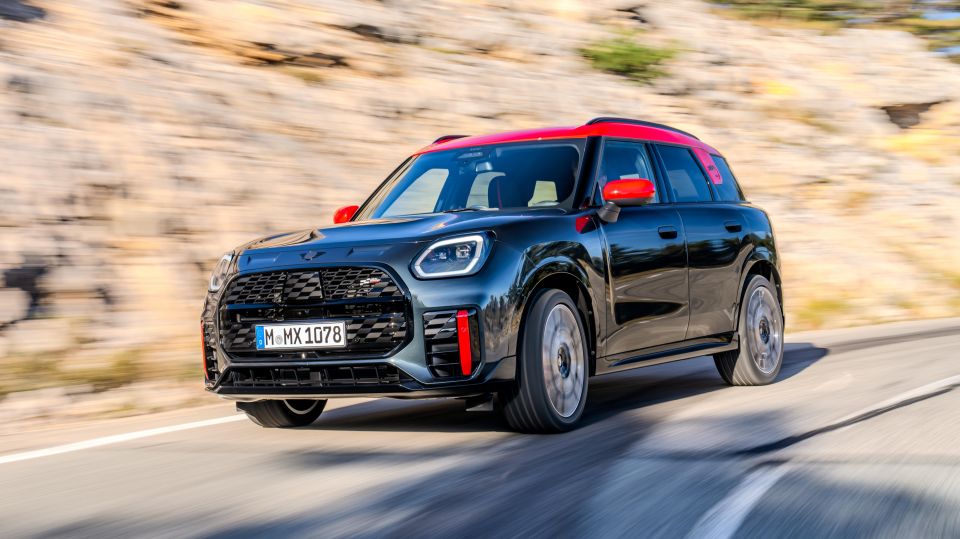
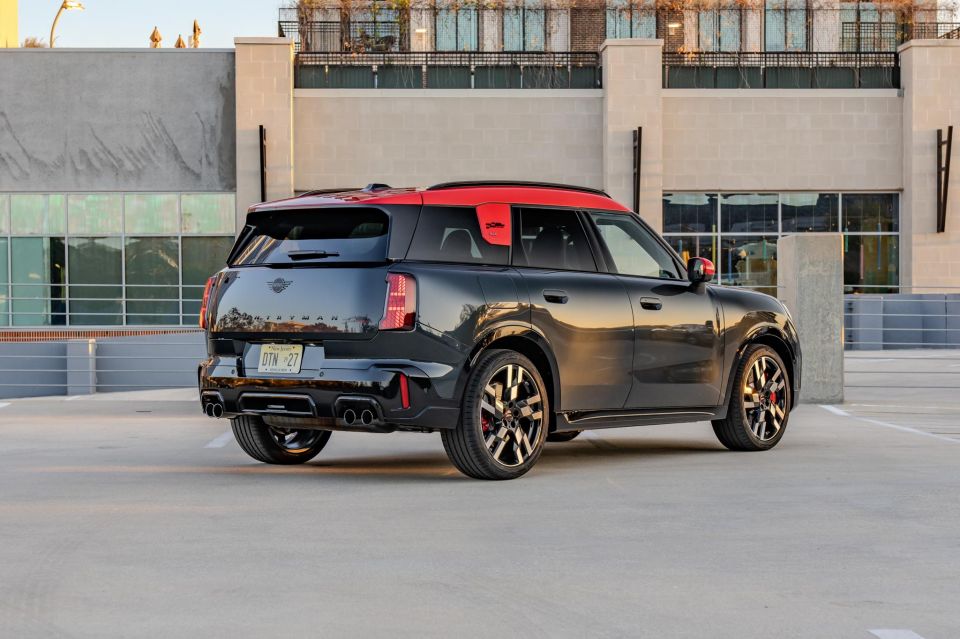

Quickly see how this car stacks up against its competition. Select any benchmark to see more details.
Where expert car reviews meet expert car buying – CarExpert gives you trusted advice, personalised service and real savings on your next new car.
Mini’s hottest version of its largest vehicle is back and bigger than ever.

The Mini Countryman John Cooper Works (JCW)is still claimed to bring that ‘go-kart feel’ the brand is infamously known for despite the car now being 15cm longer and 8cm taller compared to the previous-generation model.
This flagship petrol-powered Countryman variant is set to arrive a little later than the core petrol models in Australia. It’s currently due in the third quarter of this year alongside the electric E and SE variants.
Ahead of its arrival Down Under we had the opportunity to briefly sample the Countryman JCW Favoured as part of the international media launch in Portugal.
There are myriad Countryman variants available. On test here is the flagship petrol-powered version, the 2024 Mini Countryman JCW Favoured.

2024 Mini Countryman C
2024 Mini Countryman S All4
2024 Mini Countryman E
2024 Mini Countryman JCW All4
2024 Mini Countryman SE All4
Prices exclude on-road costs
To see how the Countryman compares with its rivals, use our comparison tool.
Buy your new car without the stress. It's fast, simple and completely free.

Great service from Travis and team, second time I have used this business would not hesitate to recommend them to anyone
Craig C.
Purchased a Ford Ranger in Sunshine Coast, QLD
CarExpert helped Craig save $7,224 on his Ford Ranger, now let us save you on your next new car.
Get your BEST priceThere’s a clear sense of presence as you’re walking up to the new Mini Countryman JCW. It does look a little large for a Mini, though it somehow still looks like one.
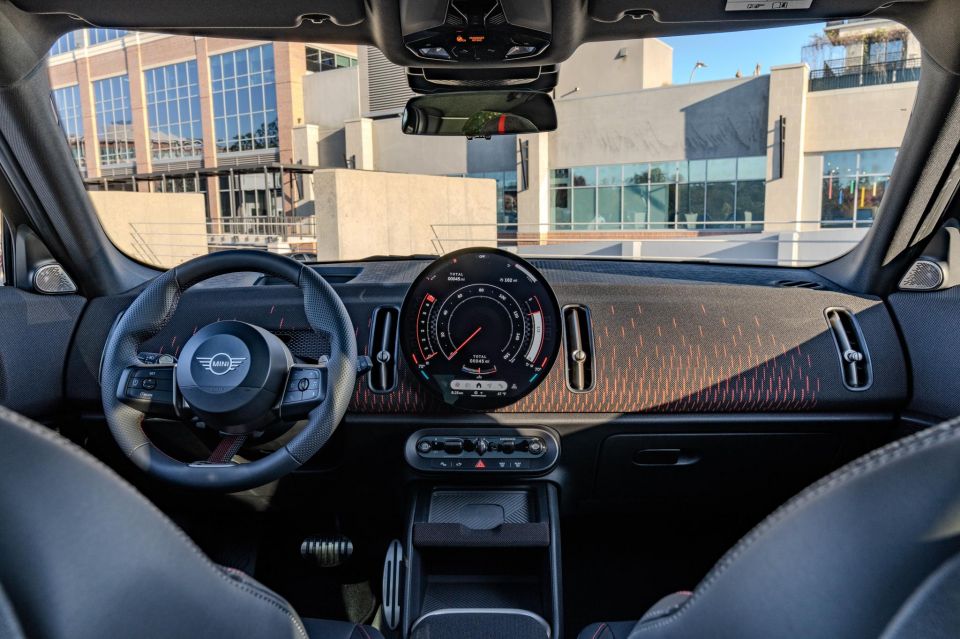
You can choose from three different exterior lighting signatures for the headlights and tail lights. These include Classic, Favoured and John Cooper Works (JCW).
The configurable exterior lighting signatures are cool because it allows you to customise your vehicle to your liking, but ultimately after a while you’ll just stick with the one.
Thanks in part to the sought-after higher ride height, hopping in and out of the new Countryman is really easy. You don’t need to hop up or down but rather pivot sideways which is easy on your hips.
Once you’re in you’re presented with a set of really cool and sporty-looking seats that are finished in Black Vescin/Cord upholstery.

The seat base and lower sections of the seat back are finished in Vescin faux leather material which thankfully has perforations to allow for some cooling, whereas the top third of the seat back is finished in the Cord fabric. This includes the headrest that’s fixed onto the seat and has a red vertical stripe on it.
The front seats are heated which is handy on cool mornings, though surprisingly they don’t feature ventilation at all. There’s also electric adjustability to allow you to dial in your perfect seating position with memory too.
The driver’s seat in particular is a very comfortable place to be with plenty of thigh support and the side bolsters securing you in. The headrest is a little far forward however which takes a bit to get used to.
Ahead of the driver is a small steering that’s wrapped in faux leather and has plenty of perforations to keep your hands cool. The hand grips in particular are extremely chunky which make the steering wheel feel substantial in hand.

The steering wheel is technically a three-spoke unit, with two of the spokes have clicky and logically placed buttons on them. The third spoke however is a taut fabric strap finished with black and grey accent stitching.
The fabric strap on the steering wheel is an unusual addition but surprisingly doesn’t stand out too much as there’s a range of similar-looking fabric finishes around the cabin.
Behind the steering wheel are a set of somewhat cutesy-looking paddle shifters that aren’t as obvious as the ones in the BMW X1 M35i. They do the same function however, with holding the downshift paddle for a couple of seconds activating the ‘Boost’ mode.
This mode doesn’t actually activate an overboost function that adds more power, but rather makes the car’s engine, transmission and adaptive suspension go into its sportiest setting.

The new-generation Countryman range doesn’t have any form of digital instrument cluster ahead of the driver. Instead there’s a head-up display that’s clear and bright, even with polarised sunglasses on. It shows a wide range of critical information including current speed, navigation, and cruise control info.
The Countryman’s head-up display is a fold-up plastic unit rather than one that projects directly onto the windscreen. The reason for this is because the car’s windscreen is too steeply raked.
Moving across is a 9.4-inch round OLED touchscreen infotainment system which is the centrepiece of the new Countryman. Off the bat it’s a fantastic-looking screen that’s incredibly high-resolution and has vibrant colours.
Depending on your preferences and how you want to drive the car, there are a range of different ‘Experience’ modes. These not only change the infotainment system look, but also change certain elements of the car’s characteristics like drive modes.

The default or normal ‘Experience’ mode is referred to as ‘Core’, with others including Go Kart, Green, Vivid, Timeless, Personal, Balance, and Trail. It all depended on how I was driving the car, but I liked flicking between the Go Kart’and Timeless ‘Experience’ modes.
Every time you change the ‘Experience’ mode there’s a corresponding animation and sound that plays. This is really cool at first but after a while it gets a little frustrating as the music you have playing cuts out momentarily. Thankfully you can turn off the ‘Experience’ mode change jingle which solves this gripe.
Annoyingly however when you’re changing between ‘Experience’ modes you’ll quickly realise things get laggy. This a common theme when you’re asking the touchscreen to do multiple things at once, which is disappointing.
The new Android-based Mini Operating System 9 interface is easy to navigate and not as overwhelming to navigate as BMW Operating System 9 in the BMW X1 and X2.
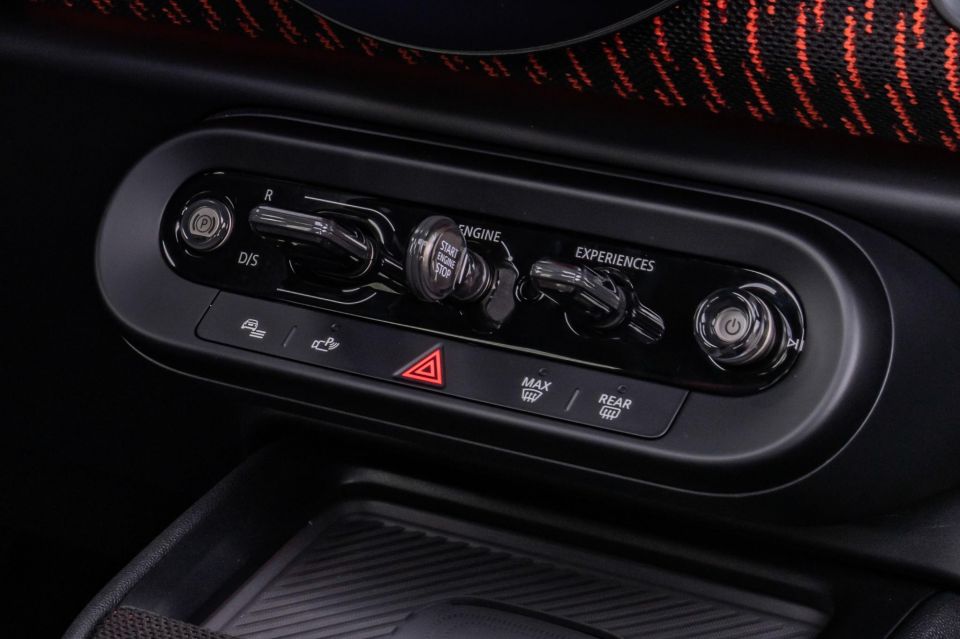
Although I mentioned the touchscreen can get laggy, this is primarily when you’re quickly swapping between apps and menus. Once you stay within a certain app like satellite navigation for a period of time, it works a lot more seamlessly.
A lot of the infotainment system’s motifs, symbols and animations are centred around it being round, but there’s no escaping how smartphone mirroring is a square window with plenty of blank space surrounding it. It’s a little strange at first, but you get used to it after a while.
As standard there’s both wired and wireless forms of Apple CarPlay and Android Auto. With an iPhone 13 Pro connected with wireless Apple CarPlay there were no dropouts whatsoever.
There’s also a conveniently placed wireless phone charger at the front of the centre console which actually charged my phone. It also didn’t slide around too much on twistier sections of Portugal’s roads.

Frustratingly the climate controls are built into the touchscreen, but thankfully the dual-zone temperature controls are always present on the display. It’s only if you want to adjust things like where the air is flowing you’ll need to use the screen.
If you really object to using the touchscreen to adjust things like the climate control settings, you can also use the car’s voice assistant. This can be triggered by saying ‘Hey Mini’ or by pressing the microphone button on the steering wheel – it’ll even tell you a joke if you ask.
Looking around the cabin there are a bunch of unique touches. The most notable is the textile dashboard that looks soft from afar but in reality it’s quite coarse and seems to be hardwearing.
In the Countryman JCW as tested here the textile dashboard is black with Chili Red vertical highlight elements. There are actually a wide range of vertical elements inside the Countryman, including the vertical air vents and interior door handles which are finished in Vibrant Silver.

While the textile dash looks pretty fancy and flash, you don’t have to look far to find some nastier cheap plastics. Thankfully the main touch points, including the armrests are soft enough.
Under the touchscreen there is select physical hardware including nubs for the gear selector and ‘Experience’ mode, as well as a small key-like knob you need to turn to switch the car on and off.
Given the gear selector has been moved to the dashboard, this technically frees up space on centre console for more storage space. The annoying things is space isn’t actually utilised to the fullest.
There’s a small open storage shelf at the front of the centre console underneath the wireless phone charger, then there are two decently sized cupholders behind it.

Interestingly there’s a small textile-covered storage section that’s meant to be the centre console box. The centre armrest thankfully slides but doesn’t open, rendering the space underneath it completely useless.
The Countryman JCW’s interior is rather dark for the most part, but thankfully a panoramic glass sunroof comes as standard from the Classic and up which adds a bit of light and airiness.
Moving to the second row is where the additional size and heft of the new-generation Countryman makes itself most known. At a leggy 182cm there’s a considerable amount of leg, head and shoulder space.
The second-row bench folds in a 40:20:40 configuration, which means each folds down individually. Every second-row seat backrest also reclines back a bit, which allows you to further relax.

Two adults will fit in the back of the Countryman with no worries at all, but try to putting a third person in the back is when things will get a tad squishy. You’ll also notice the rear centre seatbelt is roof-mounted, which reduces rear visibility.
Second-row amenities include console-mounted air vents, USB-C ports, and a fold-down armrest with cupholders. There are also the requisite ISOFIX and top-tether anchor points for mounting child seats.
Around the back the Countryman JCW has a power tailgate with a hands-free function which is handy if you’re trying to open the boot with your hands full.
Once the boot is open you’re presented with an adequately sized boot.

Where expert car reviews meet expert car buying – CarExpert gives you trusted advice, personalised service and real savings on your next new car.
Mini officially quotes a boot capacity figure of 505 litres, which expands to 1530 litres with the second row of seats folded.
Amenities in the boot are few and far between. Disappointingly there’s no spare wheel whatsoever in the Countryman JCW. Instead you get a tyre repair kit which can be helpful in certain situations, but isn’t as good as having a proper spare wheel.
The European-specification Countryman JCW model on test here varies slightly from the Australian-specification model arriving mid-year. It only produces 221kW, which is 12kW less than the forthcoming AU-spec model.

| Model | Mini Countryman JCW All4 |
|---|---|
| Engine | 2.0-litre 4cyl turbo |
| Power | 233kW (221kW as tested) |
| Torque | 400Nm |
| Transmission | 7-speed dual-clutch auto |
| Driven wheels | All-wheel drive |
| Kerb weight | 1660kg |
| Fuel economy (claim) | 7.8-8.3L/100km (WLTP) |
| Fuel economy (observed) | 11.2L/100km (80km mixed driving) |
| Fuel tank size | 54 litres |
| Fuel requirement | 95 RON |
It’s worth noting we only experienced the new-generation Mini Countryman JCW as part of the international media launch in Portugal.

Our prescribed drive loop consisted of around 80km of Portuguese highways, as well as urban and rural roads. There was also a bit of dynamic driving to see what the car is capable of.
Starting up the Mini Countryman JCW is done by twisting a little knob at the front of centre console. It’s similar to having to turn a physical key in the ignition but more user-friendly and fun as you don’t actually have to take the key out of your pocket.
When the iconic ‘B48’ engine starts up it roars to life. The idle can be a little harsh at first, which itself is thrilling, but after a while it calms down as the engine warms up.
Setting off you’ll quickly realise there is plenty of power available with a depress of the accelerator. You’ll easily be keeping up with traffic from the lights, or pulling ahead with ease if you’re that way inclined.
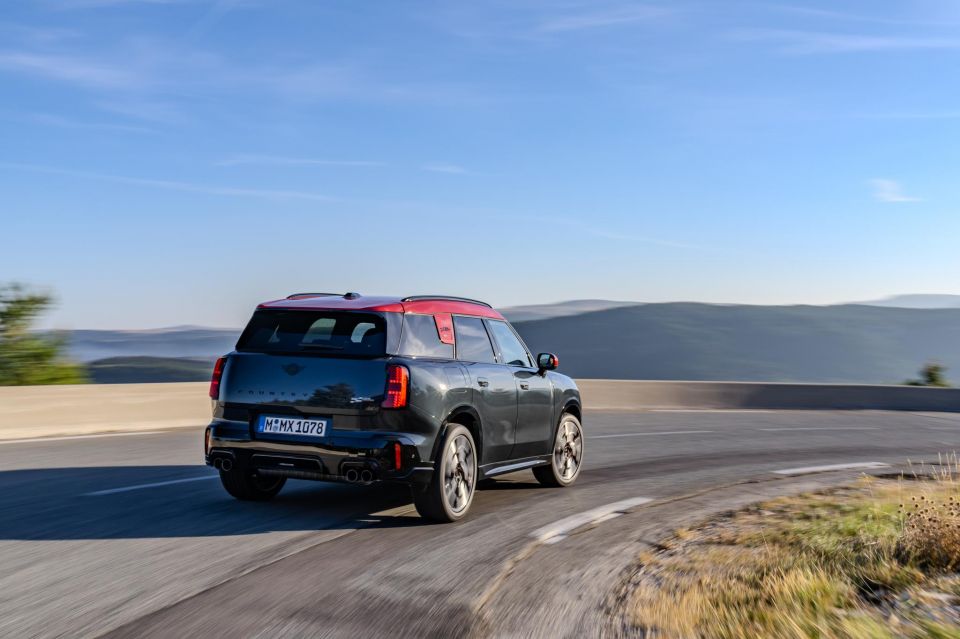
In addition to the oodles of power, there’s the confidence and security that comes with all-wheel drive grip. This especially comes in handy if the roads are wet and slippery.
The European-specification Countryman JCW we drove as part of the international media launch produces 221kW of power, whereas the forthcoming Australian-specification model will produce a zestier 233kW.
In the normal ‘Core’ drive mode there’s a touch of lag that comes from the turbocharged dual-clutch drivetrain combo, but this is likely to smooth out the driving experience. It’s rather natural and intuitive in everyday driving.
Flicking the car into ‘Go Kart’ mode was never not fun. Both the adaptive suspension and steering stiffened up, and it also dialled up the synthetic engine noise inside the cabin.
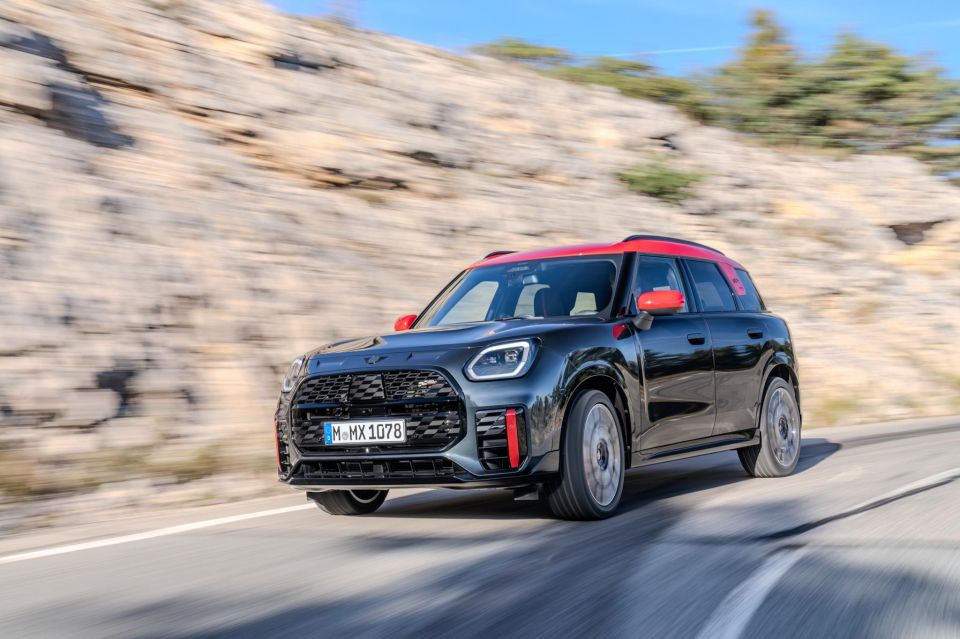
The only thing that made feel a tad uneasy about ‘Go Kart’ mode was it turned traction control off. Thankfully it gives you a warning to confirm this every time you enter the mode so you are aware of what’s happening.
If ‘Go Kart’ mode isn’t enough for you however, there’s a ‘Boost’ mode that can be activated by holding the down paddle shifter for a second or two.
Although ‘Boost’ mode doesn’t unlock any additional power, it maximises the engine and transmission to make sure you’re given all they can provide.
Inside the cabin there are exhaust pops and crackles, though I’m 99 per cent sure the majority of these are synthesised. There also noticeable jolts between gear changes which adds to the experience.

Around town the Countryman JCW feels nimble and is really easy to manoeuvre. It has light steering in its normal ‘Core’ driving mode, though this does stiffen up if you slot it into ‘Go Kart’ mode.
As standard there are front and rear parking sensors, as well as a surround-view camera. There’s also a nifty parking assistant.
Looking around from the driving position there’s plenty of visibility, including out the back. In classic Mini style there are rounded side mirrors which thankfully aren’t too small.
There’s no disguising how large this car is for a Mini. It clearly feels like a BMW X1-sized crossover, but somehow it still has elements that bring it back to being a Mini-like driving experience. I think this is largely down to how the steering feels.
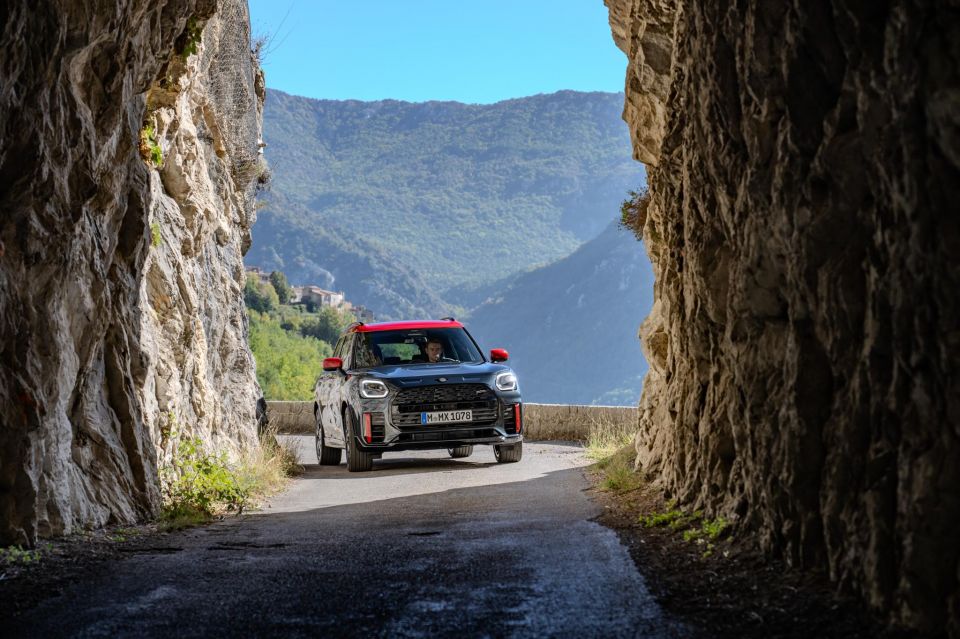
At low speeds the Countryman JCW’s adaptive suspension is really comfortable and compliant, though it can be made firmer with different ‘Experience’ modes, including ‘Go Kart’ mode.
Building up speed is incredibly easy in this car. You need to be careful when accelerating along a highway because if you’re not paying attention the speed limit will creep up on you quickly.
The Countryman JCW is also really communicative and a fun car to drive dynamically. There’s plenty of grip and the car will let you know when it’s getting towards its limit.
At higher speeds the Countryman JCW calms down and becomes an effortless cruiser. It’s so interesting how this car can be an absolute beast one minute, then a sedate tourer the next. I think this is largely down to the adaptive suspension can quickly vary its damping force.
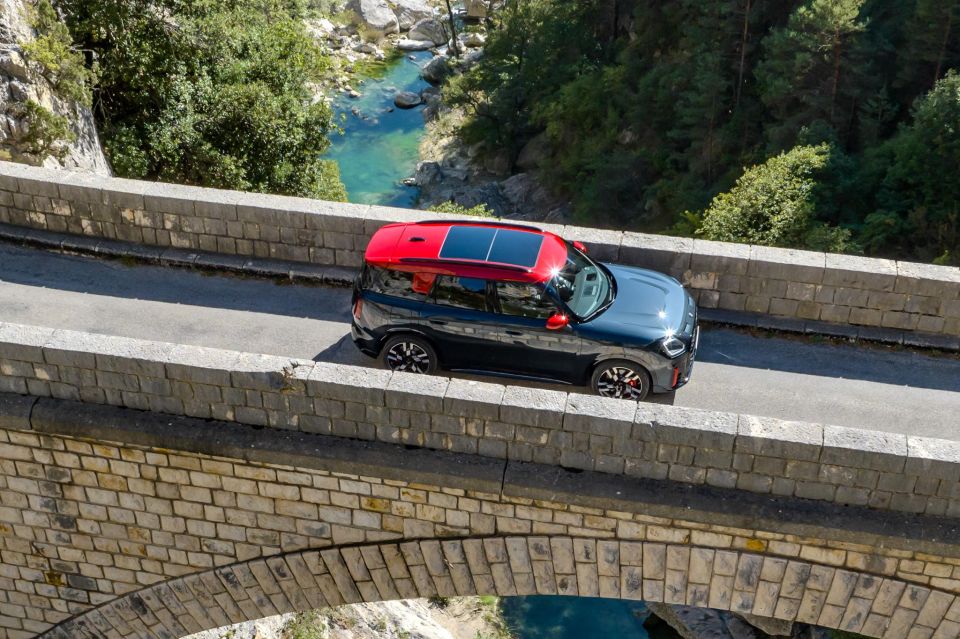
On the safety front, the adaptive cruise control system is great. The radar-based system is a million times better than the previous-generation’s camera-based system that would sometimes die when facing direct sunlight.
Like the BMW X2 I also experienced in Portugal, the Countryman’s adaptive cruise control system is one of the better systems I’ve experienced to date as it naturally reacts to cars pulling into your lane.
The lane-keep assist isn’t too intrusive, whereas the lane-centring function is fantastic. The latter of these systems is best left for clearly marked highways and freeways.
The last safety feature I want to mention in this section is the speed limit assist function that was present in our European-specification tester.

When you travelled 2-3km/h over the posted limit a chime would play. Although this chime wasn’t as obnoxious as the likes of Hyundai’s and Kia’s, it would default to on every time you switch the car on.
In Europe there is currently a mandate to have intelligent speed limit assist features on new models sold in the region. It’s not currently mandated in Australia.
There are three different trim levels available within the JCW range – we tested the flagship Favoured trim level.
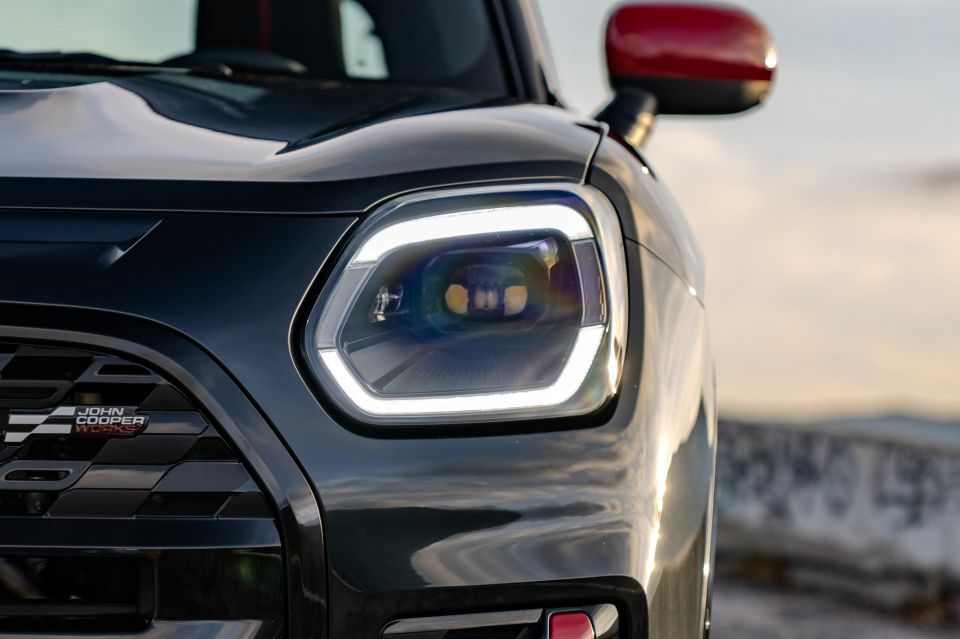

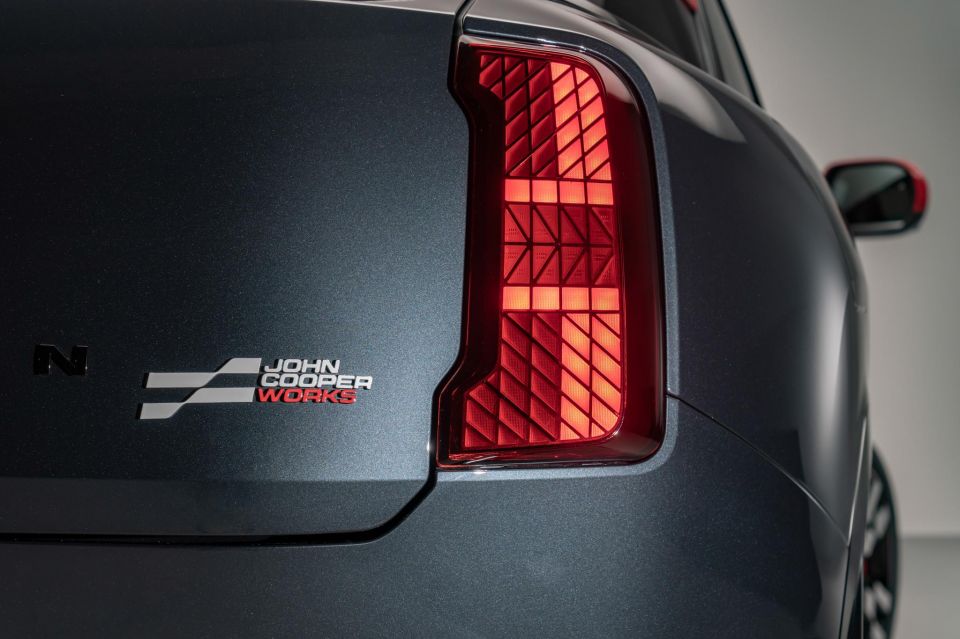

Mini Countryman JCW Core highlights:
JCW Classic adds:
JCW Favoured adds:
Certain exterior paint colours are reserved for the Countryman JCW Classic and Favoured – the vehicle we tested was finished in Legend Grey.

The following finishes are available:
The new Mini Countryman has yet to be tested by ANCAP or Euro NCAP.
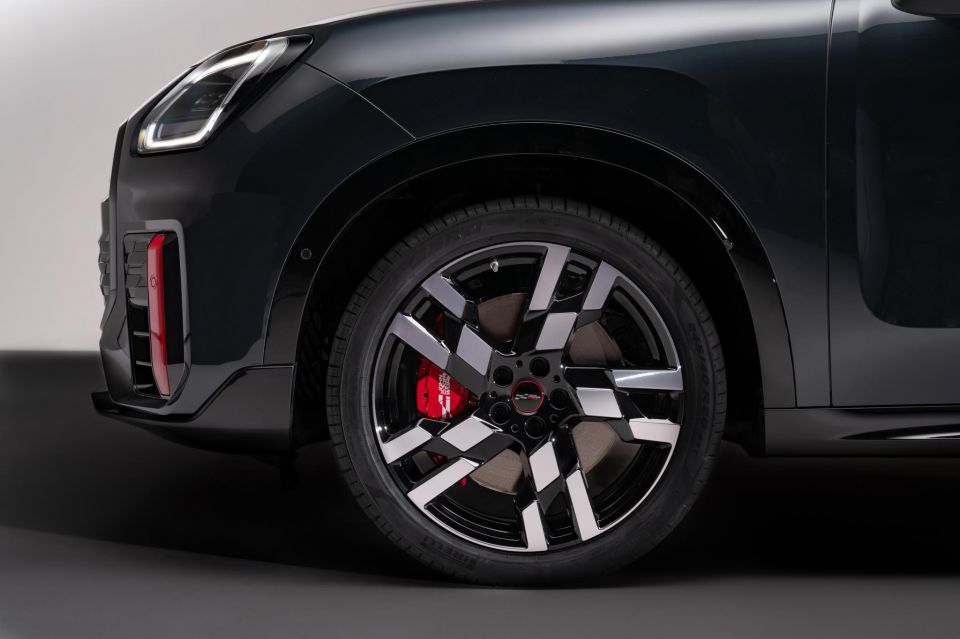
All models come standard with the following equipment:
Classic and up get:
All Mini Countryman models are backed by a five-year, unlimited-kilometre warranty.
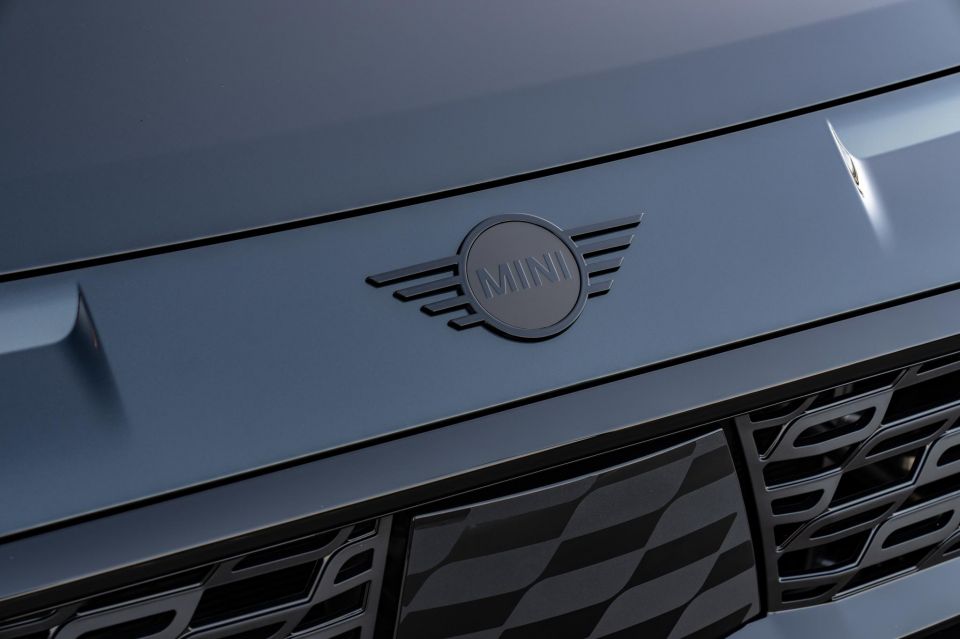
Mini offers a five-year/100,000km Service Inclusive package for the Countryman JCW All4 at $3092.
Buy your new car without the stress. It's fast, simple and completely free.

Great service from Travis and team, second time I have used this business would not hesitate to recommend them to anyone
Craig C.
Purchased a Ford Ranger in Sunshine Coast, QLD
CarExpert helped Craig save $7,224 on his Ford Ranger, now let us save you on your next new car.
Get your BEST priceThe new-generation Mini Countryman has grown a considerable amount, but somehow it still looks, feels and drives like a Mini. It’s also a meaningful upgrade in many different ways when compared to the previous generation.
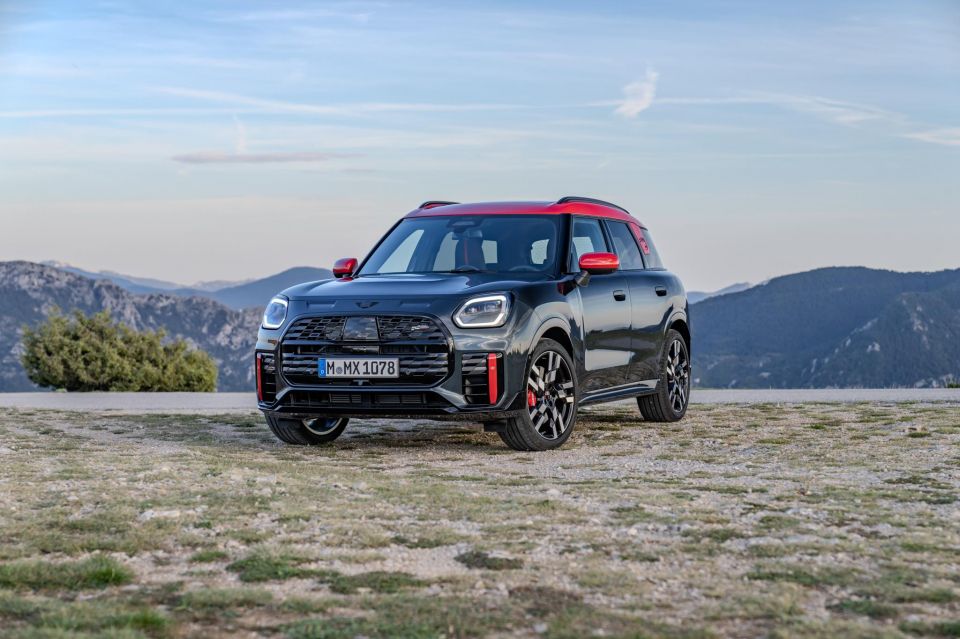
The interior in particular is a standout in the new Countryman, with its new 9.4-inch circular OLED touchscreen infotainment system and the cool-looking textile dashboard. It’s disappointing however how many sections of harder plastics there are and how laggy the touchscreen can be.
The flagship Countryman JCW Favoured on test here arguably forms as better value compared to its BMW X1 M35i counterpart. Almost $17,000 is nothing to sneeze at, especially when they have exact same powertrain with the same outputs, and comparable standard equipment.
If you’re after all-out power and performance, the Countryman JCW does form as the pick of the range. Something to consider however is the all-electric and heavier Countryman SE produces a similar amount of power and 94Nm more torque.

Click the images for the full gallery.
MORE: Buy a Mini Countryman MORE: Everything Mini Countryman
Where expert car reviews meet expert car buying – CarExpert gives you trusted advice, personalised service and real savings on your next new car.
Jack Quick is an automotive journalist based in Melbourne. Jack studied journalism and photography at Deakin University in Burwood, and previously represented the university in dance nationally. In his spare time, he loves to pump Charli XCX and play a bit of Grand Theft Auto. He’s also the proud owner of a blue, manual 2020 Suzuki Jimny.


Max Davies
3 Months Ago
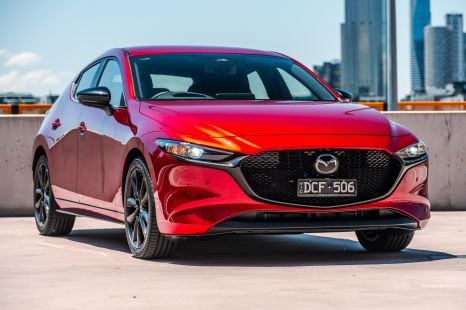

Josh Nevett
2 Months Ago


William Stopford
2 Months Ago
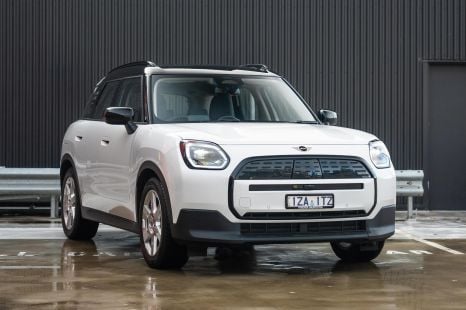

Josh Nevett
2 Months Ago
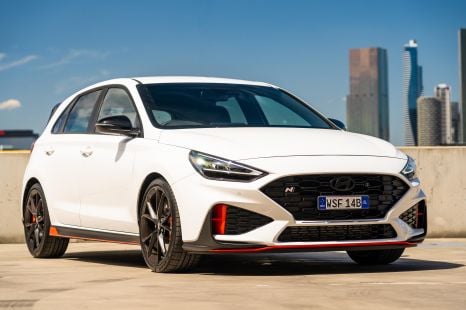

Josh Nevett
2 Months Ago
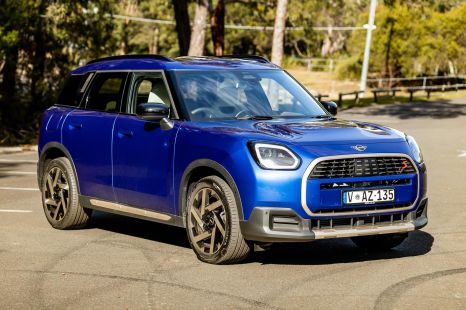

Matt Campbell
1 Month Ago